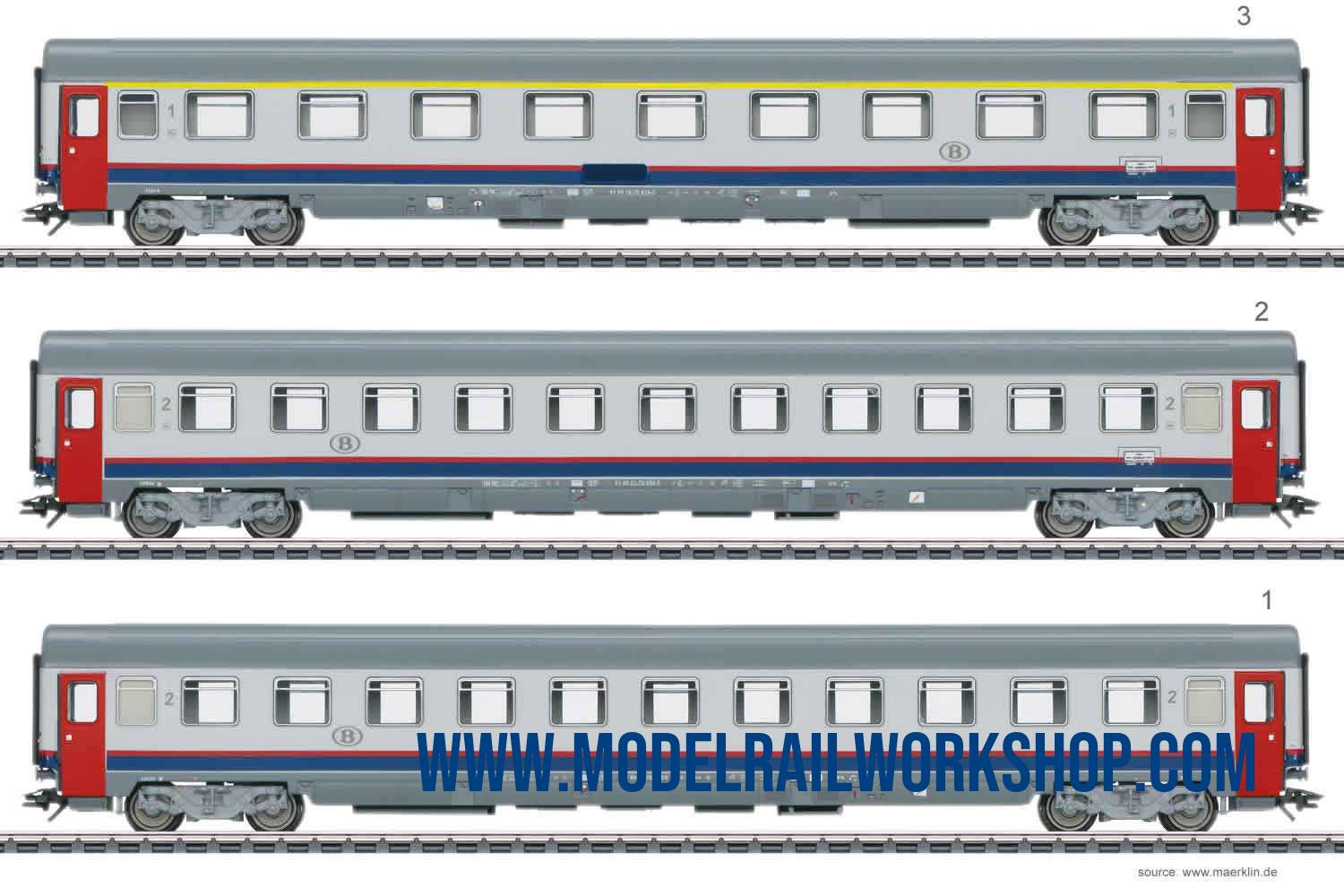
| KEY DATA | |
|---|---|
| Product Name | 43523- Passenger car set with three cars - EuroCity 90 Vauban - 1st/2nd cl |
| Object type | Car-Passenger |
| Product Line | Märklin |
| Era | 2006 - (VI) |
| Manufactured years | 2023-2024 |
| Type of housing | Synthetic |
| Length | 28.2 cm each |
| Technology | - |
| Railway company | BE-SNCB (Belgian Railway) |
| Märklin RRP (Year) | 199€ (2023) |
| Url to Märklin | Klick to GoTo www.maerklin.de |
| No | Obj.No | Obj.txt | Category | Description |
|---|---|---|---|---|
| 43523-1 | ?? | B | BI6 | Passenger car - 2nd cl - gray and red |
| 43523-2 | ?? | B | BI6 | Passenger car - 2nd cl - gray and red |
| 43523-3 | ?? | B | AI6 | Passenger car - 1st cl - gray and red |
| Description | |
|---|---|